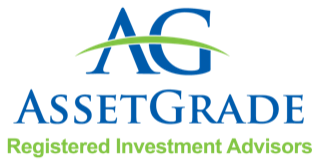
Give, Grow, Grant
By: Kate Hennessy
According to a recent study from Fidelity Investments, 79% of donors plan to increase or maintain their charitable giving levels this year. Despite the September U.S. unemployment rate of 7.9% (up 4.4 points from September 2019), individuals continue to give to charitable organizations. While there are many ways to give, the donor-advised fund is one of the most efficient and tax-advantageous ways to give to a charity. A donor-advised fund is an investment account created to support charitable organizations. Once a contribution is made, you are eligible for an immediate tax deduction.
The CARES Act (Coronavirus Aid, Relief and Economic Security) that was signed into law on March 27th of this year provides increased incentives for charitable giving for individuals and corporations. If you itemize your deductions, your AGI (adjusted gross income) limit for cash contributions was increased and you can now elect to deduct up to 100% of your AGI. If you are not itemizing and make a cash contribution, you can take an additional “above-the-line” deduction for charitable gifts made in cash up to $300. If you don’t itemize, you can claim this new deduction. This will impact the majority of us as 70% of taxpayers don’t itemize.
If you plan to make charitable gifts this year, there are three simple steps to open and gift to a donor-advised fund before year-end:
- GIVE. Open a donor-advised fund at your financial institution. Many financial institutions offer donor-advised funds including Fidelity Charitable, Schwab Charitable and Vanguard Charitable. Once you’ve opened your fund, either donate long-term appreciated assets to minimize your capital gains taxes or make a single donation in cash, both types of gifts allow you to support multiple causes over time. The amount you give in any given year to the donor-advised fund is your charitable contribution for that year. If your income is unusually high this year, consider charitable bunching to your donor-advised fund. Charitable bunching allows taxpayers to “bunch” contributions in specific years, while limiting donations in other years. This can allow you to offset your higher income.
- GROW. If making a cash contribution to your donor-advised fund, consider investing in an asset allocation pool within your fund. Many financial institutions allow you to invest in asset allocation pools which have a combination of stocks, bonds and short-term investments. Your contribution can grow tax-free and allow you to grant more dollars to charities in the future.
- GRANT. Grants to your favorite charities can be made on-line through your donor-advised fund. This allows for simple record-keeping and is much easier than writing a check and mailing it. While most of us make our grants at year-end, many charities need our support before year-end.
A donor-advised fund provides an easy and tax-advantageous way to give to your favorite charities. Donating through a fund makes it much easier to keep track of your gifting records online through your financial institution rather than trying to find and keep the acknowledgement letters from charities. Contact us if you are interested in setting up a donor-advised fund so that we can help you to simplify your gifting strategy.

